
2015
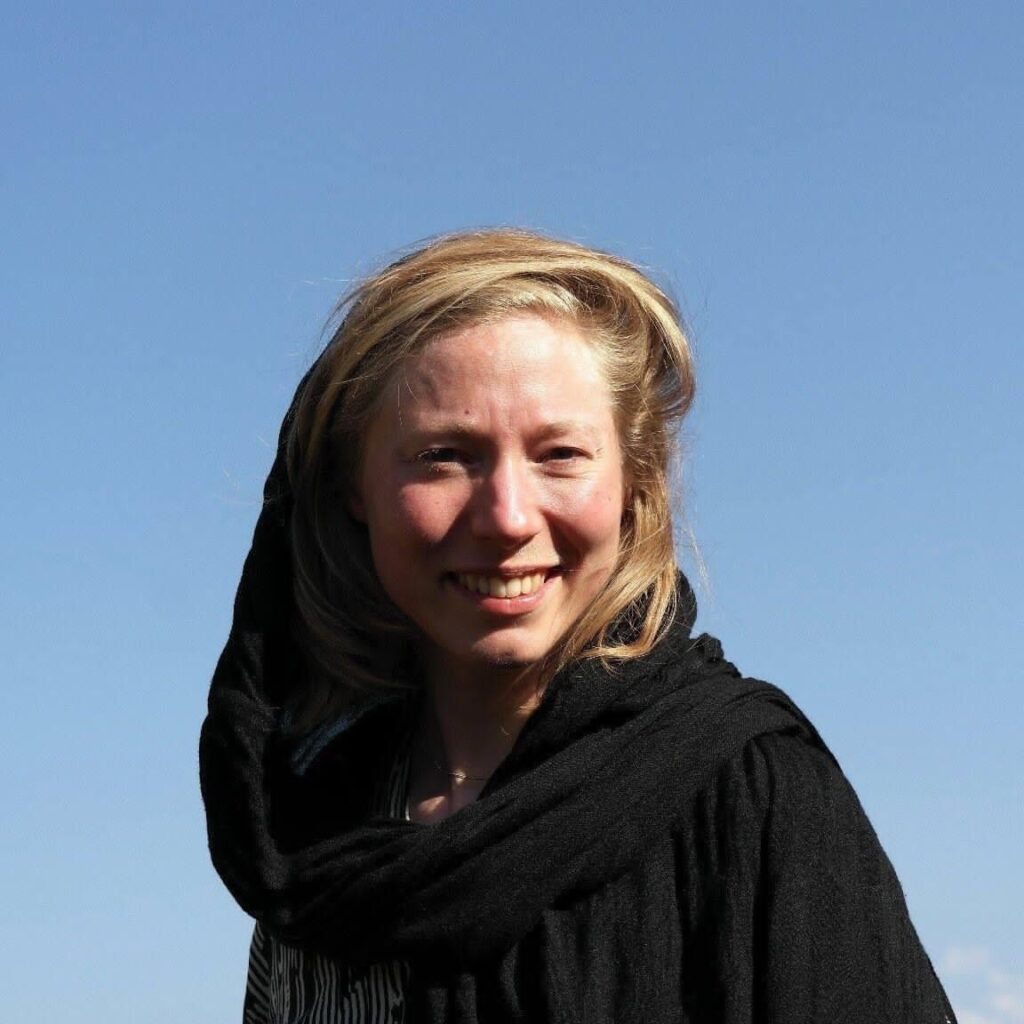
Lise Rask
About Lise Rask
Stretching between Berlin, Copenhagen and southern Sweden Lise Rask works with cultural production and academic research in the field of urban studies and urban planning.
Through various platforms such as exhibitions, audio productions, workshops and writings Lise Rask seeks to contribute to the dialogue about how the urban environment, not least urban politics, impacts on social patterns and individual lives. A central aim is to nuance and communicate the manyfold layers of any particular social restrain or possibility we experience in everyday live. Not as comprehensive explanations but as an opening for further reflection and engagement.
Lise Rask is part of the artistic/curatorial collective Sounds Construction who founded the summer school program 'Ljudskolan' (the Sound School). The Sound School is an interdisciplinary experiment where the concepts of 'sound' and 'school' are re-interpreted through a mixture of journalistic, artistic, academic and social collaborative methods.
Lise Rask teaches as an external lecturer at the program of Urban Planing, Roskilde University, Denmark.
Residency at KAAF
With my residency at KAAF I had the privileged opportunity to learn about and engage with the artistic and architectural discourse emerging from and revolving around Tehran's rapidly changing urban realities.
As part of the curatorial team for the exhibition 'Flanerie' I had the chance to meet and collaborate with many passionate professionals and volunteers around the KAAF Institute contributing an inspiring variety of professional fields and perspectives.
My encounters with the people of KAAF has not only been an introduction for me to the artistic and architectural scene of Tehran, but also a chance to develop and reflect on my own practice. Something I undoubtedly will take up and draw on in future works.
In cooperation with KAAF Institute, Tehran. For further info visit: www.ka-af.com 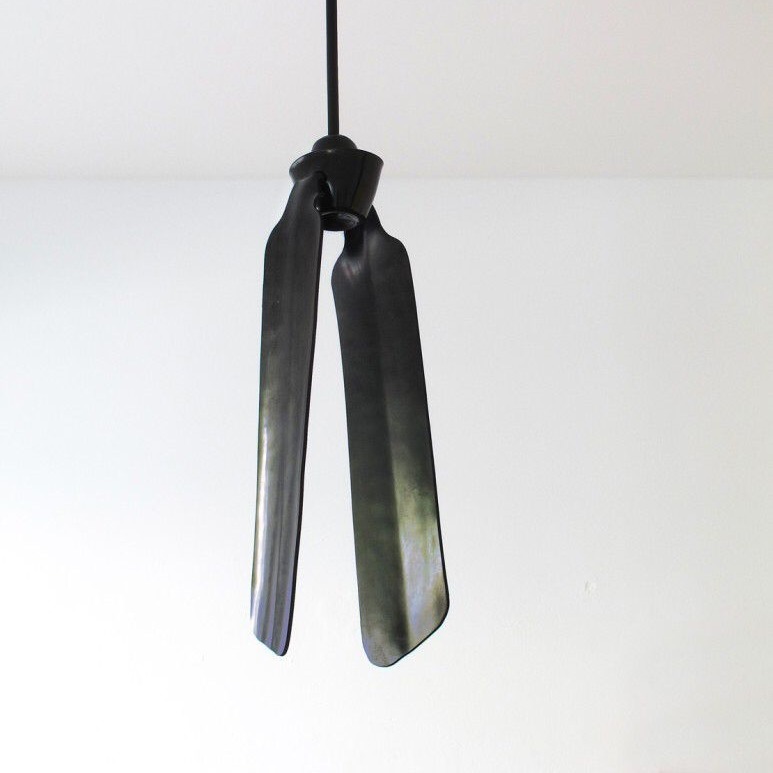
Geerten Verheus
The way the invitation to come to Tehran and bring a work for the exhibition Flânerie came into being turned out to be characteristic for the way I and the work was received: through a genuine interest in the actual work. The curator Ali Reza Labeshka saw a piece in a small exhibition in the ACUD project space in Berlin, and left his card with the curator, who then handed it to me. I contacted him and after many short-term changes of time and location–similarly characteristic for the Iranian culture of dealing with appointments –, I met with the curator, who revealed a multi-faceted profound interest in that particular piece: Lenghts (by and large).
My developing wish to travel to Tehran was furfilled with the invitation to come for a short residency and take part in the exhibition.
Although it is obviously very easy to have reservations about visiting a society that has a reputation of being governed by a regime that doesn’t grant its citizens the liberties we are used to in Europe, my experiences with meeting people from Iran had always been very positive, not to say inspiring.
Arriving in Tehran didn’t dissapoint these experiences. I felt very welcomed, and was again met with genuine interest in who I am and where I and my work come from. And also in the course of my stay there were many occasions where I was pleasantly surprised by the uplifting friendliness and helpfulness of good humoured locals, not hindered by the lack of a common language.
Arriving at the beautifully located KAAF after a taxi-ride that prepared me for more crazy traffic, witty taxidrivers and views on the rough mix of urban architecture amidst highways and heavy air pollution, I was impressed with the openness and hospitality of the people there and with the beauty and the sense of space and material with which the space and garden around it were set up. I was taken to the residency apartment located close in a quiet neighborhood, that was extremely spacious, with all the comfort and also all the privacy that one could wish for. In the course of my stay I became attached to the people around KAAF, a diverse group of artist, critics, musicians, scientists whose eagerness to talk about their work and my work and their willingness to answer all my questions about the conditions of living and working in Tehran was truly inspiring and refreshing in comparison to the somewhat callous artscene in Berlin. Especially once the exhibition was set up – in which my piece was allocated a honourable central position – I was overwhelmed by the response of visitors and other participating artists, who did not only ask me about my work, but were also very open in sharing their thoughts on my sculpture in the show. In contrast to the conversations I am used to at art events in Berlin, where the work actually on display tends to be discussed with aloofness, the eager and unbiased atmosphere of this art-scene in Tehran has left a profound impression on me. I learned more about my own work in one week, than I normally do in a year.
The exhibition FLÂNERIE was not only a balanced collection of works on urban hegemony, it was another opportunity to learn more about the city of Tehran. It featured works that addressed specific aspects of the impact of government on Tehran next to more abstract comments on urban life and politics. I was surprised by the fact, that in spite of trade sanctions and the restrictive regime under which artists have to make their work, a lot of them maintained enough spirit to produce work that reveals freedom of thought, a sense of humour and deep knowledge of art history.
The hospitable and generous founder of KAAF, Sadra Keyhani, the curator Ali Reza Labeshka and the highly engaged group of people contributing to the realization of the exhibition and the residency are to be credited highly for enabling this place to exist.
www.geertenverheus.com
---------------------------------------------------------------------------------------
1965 born in Amsterdam, the Netherlands
1988-1993 BA in photography, Gerrit Rietveld Academie Amsterdam, NL
1998- 1999 MA Fine Art, Chelsea College of Art & Design, London, UK
Lives and works in Berlin, Germany
In cooperation with KAAF Institute, Tehran. For further info visit: www.ka-af.com 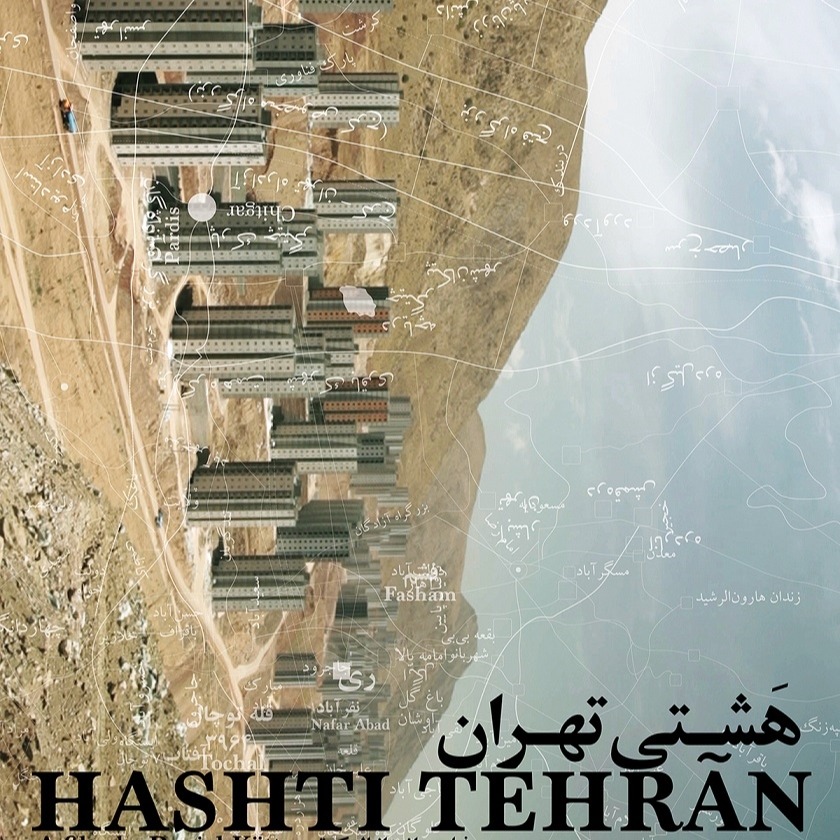
Daniel Kötter
Daniel Kötter, born 1975, is a director and video Artist whose work oscillates deliberately between different media and institutional contexts, combining techniques of structuralist film with documentary elements and experimental music theater. It was shown in numerous galleries, video festivals, concert halls and theatres all over the world.
Between 2008 and 2011, he developed the video-performance trilogy Arbeit und Freizeit. His video performances in collaboration with composer Hannes Seidl are shown at international festivals such as the Venice Biennale, steirischer herbst and others. Kötter's series of installations, films, and discursive work on urban and socio-political conditions of performativity has been under development since mid-2009 under the title state-theatre: Lagos/Teheran/Berlin/Detroit/Beirut/Mönchengladbach (with Constanze Fischbeck). Daniel Kötter has been living and working in Berlin since 1996.
Daniel Kotter is now in Tehran working on film project "Randlagen" in which he investigaes the relationship between city and non-city, whether it be the surrounding perriferies and wilderness or natural resources necesary for city life.
„Segregation“ and „privatization“, „security“ and „control“ are core terms of urban transformation in the developping cities of the 21st century around the globe. Its contested counterparts are „public“ or „open space“, „access“ and „citizenship“. All these concepts seem stuck in the negotiation between aspiration of new liberal economies trying to connect to a global construction and business boom on the one and a tendency of preserving a shared public sphere for all groups of society within the urban area on the other hand. Randlagen tries to shift this focus to areas where the controlling force of urban development seems to lose its influence, where definitions get blurry and fluid: the edges and peripheries, those contact zones, where city and landscape, nature and construction meet. Can a citizen who leaves the city for recreational or other purposes, still be called a citizen? Which societal function does he take on, which political role does he play in the moment where he enters or lives in the periphery of a city? And speaking in terms of urban research: Which kind of alternative concepts of space are created in areas where urban planning and non-defined wastelands naturally intersect
In cooperation with KAAF Institute, Tehran. For further info visit: www.ka-af.com 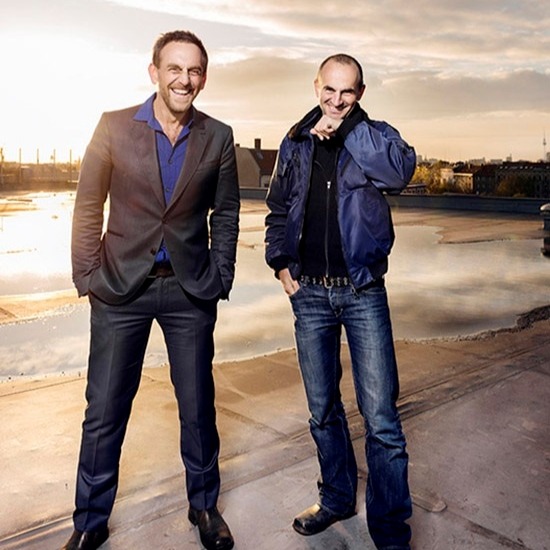
Realities:United
In 2000 the brothers Tim Edler and Jan Edler founded realities:united (realU), a studio for art, architecture and technology. realities:united develops and supports architectural solutions, usually incorporating new media and information technologies. The office provides consulting, planning, and research, also undertaking projects for clients such as museums, businesses, and other architectural firms.
One major focus of realities:united is architecture’s outward communicative capacity. Another is the quality of the user experience inside spaces, which in function and appearance is essentially augmented and changed by additional layers carrying information, media content and communication. Some of the studio’s projects resemble classical architectural work, but venture regularly into art, design, or technology research. Most projects are intended to serve as a catalyst in a given situation, and are therefore strongly determined by identifying, transforming, amplifying, and combining various existing potentials. In that sense the approach centres on taking advantage of available opportunities, rather than specific skills, procedures, or tasks. Although the majority of the projects incorporate new technologies or experimental approaches in one way or the other, the work always aims to affect actuality, not virtuality.
Strategic initiative and a high proportion of communication and mediation in work processes mark many of the firm’s innovative projects. This approach creates the bridge between utopian ideas, abstract conceptions and realizations and has been recognized internationally. Currently realities:united is working on new projects in Europe, Asia and the USA.
In cooperation with KAAF Institute, Tehran. For further info visit: www.ka-af.com 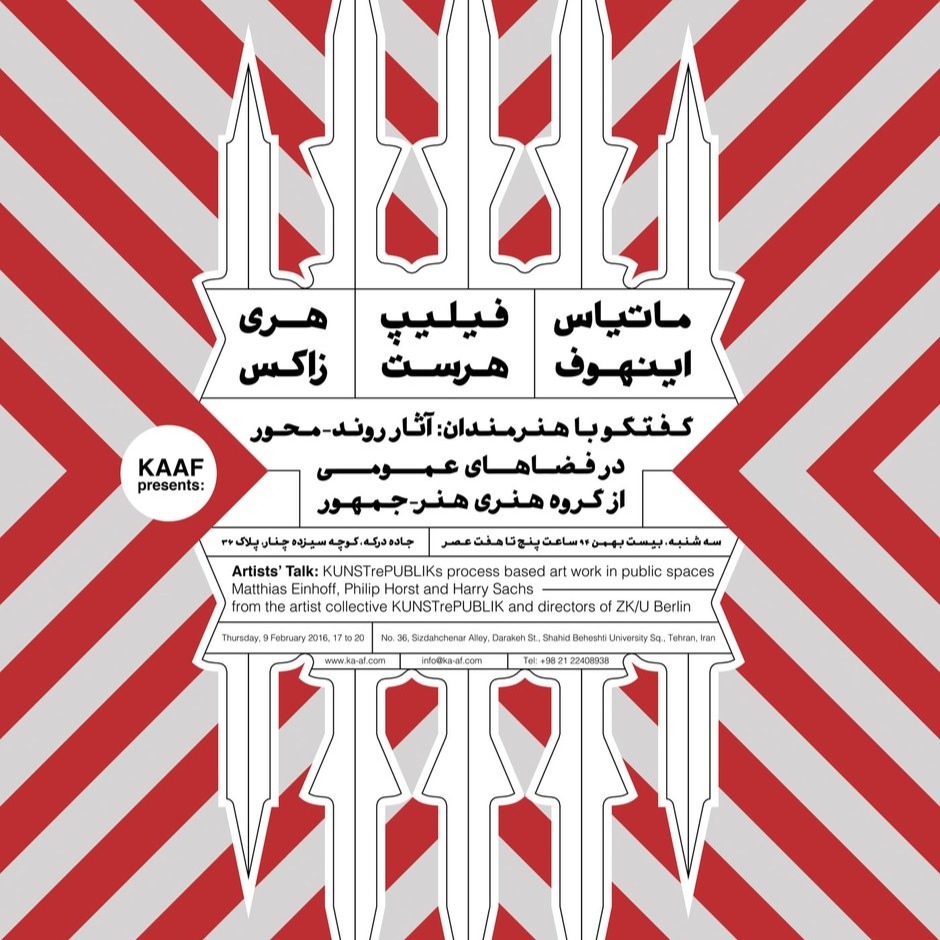
KUNSTrePUBLIK
KUNSTrePUBLIK is a registered non-profit oganization and artist collective founded in 2006.
The group’s formation was precipitated by their initial project, www.skulpturenpark.org Skulpturenpark Berlin_Zentrum, a non-traditional exhibition venue on 62 vacant lots of downtown real estate, on what was formerly the “death strip” within the Berlin Wall. Since 2006, the group has conceived and realized many site-specific exhibitions, which have pulled from their extensive research of the site’s history and its present in-between status. Through their activities in the park, the group’s members have gone on to engage in other constellations and community-based activities, including education, urban planning, art making and curation.
The group has also hosted universities and traveled to other nations to conduct workshops for alternative and subversive strategies in public art.
The organization relies on private donations, specific project grants, and collaborations with other institutions in order to fund its program. The members of KUNSTrePUBLIK continue to work both collaboratively and independently, as artists, curators, educators, organizers and urban planners, as each invitation, site or situation demands.
In July 2012 KUNSTrePUBLIK opened the Centre for Arts and Urbanistics (ZK/U) in Berlin Moabit.
The ZK/U sees itself as a laboratory for inter- and trans-disciplinary, activities centered on the phenomenon of “the city”. ZK/U promotes international exchange on global issues, in the light of what is happening in one’s own backyard. Working with local and international partners, ZK/U residencies brings together critical minds at the cutting-edge of artistic production and urban research.
Testimonial for KAAF-Institute, Matthias Einhoff, KUNSTREPUBLIK, 2016
How did you experience Teheran?
How did you find KAAF-institut, how was your collaboration and residency there?
During our first stay to Teheran, we were hosted by KAAF-Institutd. Our trip was aiming at creating first contacts and exploring the city.
KAAF-Institute was an amazing host and guide through those different visible and invisible layers of the city. We experienced the cultural diversity, the various political dimensions of public space and individuals, telling their personal story. It was a great and enriching starting point for debate and the work, that we are planning to develop from our gathered knowledge and inspiration.
The stay in our residency in the northern hills of Teheran was very comfortable and, despite the coldness of the winter, warm and welcoming.
Our host helped us with logistics and travel and solved every problem within NO TIME. Our presentation and discussion at the institute was well planned, promoted and attended. We were able to get in touch with interesting cultural and social personalities and exchange thoughts and ideas.
The artist collective KUNSTrePUBLIK has been working in the public sphere for more than 10 years. Through tangible projects they have been exploring the potentials and limitations of art for citizens to freely express or to be represented by the action and physical outcome of KUNSTrePUBLIK’s work.
KUNSTrePUBLIK’S approach is driven by the site and crosses architectural, artistic and political means of creating projects:
KUNSTrePUBLIK has been creating an oracle that allows citizens to anonymously pose and answer unwanted and otherwise censored questions in Uljanovsk, Russia, it has build a mobile ‚protest-fountain‘ in Washington D.C., it created a huge advertising cube for unrepresented vendors in a market district of Jakarta and created an opera in burned cars, to withstand upcoming gentrification.
KUNSTrePUBLIK’s approach includes curatorial work to capture a broader social picture: the collective has initiated ‚Archipel Invest‘ - a series of projects to outline micro-economical futures of the post-industrial Ruhr-area, it was running the ‚Skulpturenpark Berlin_Zentrum‘, an inner-city wasteland, that served as a venue for discussing urban dynamics with subversive means and has created a series of projects named ‚Angst in Form‘ revealing human fears in Halle/Saale.
KUNSTrePUBLIK is the organization behind ZK/U - Center for Arts and Urbanistics - exploring urban communication structures and implementing experiments and projects that foster the conversation between diverse stakeholders in the urban arena.
The ZK/U is located in a neighborhood with various conflicts, that are due to the polarity of backgrounds: more established ‘middle-class’ citizens, precarious 1st and 2nd generation migrants and newly arriving groups of refugees. Therefor ZK/U particularly aims at (re)activating the social and spatial relationship between individuals and groups, that are divided by differences of education, income, gender and ethnic background.
KUNSTrePUBLIK is a founding member of the initiative ‚Haus der Statistik‘, which aims at activating an abandoned building in the centre of Berlin, to be used for integration of artists, refugees and social initiatives.
www.zku-berlin.org
www.kunstrepublik.de
www.skulpturenpark.org
www.archipel-invest.eu
www.wasteland-twinning.net
www.hausderstatistik.org
In cooperation with KAAF Institute, Tehran. For further info visit: www.ka-af.com 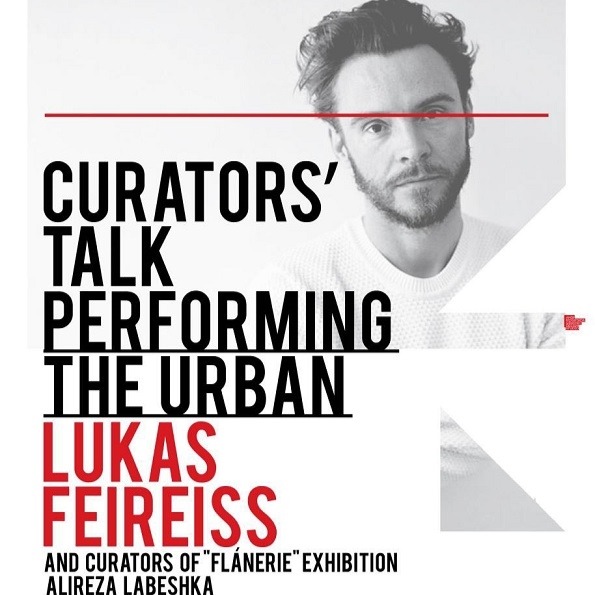
Lukas Feireiss
With a background in philosophy and cultural studies Lukas Feireiss runs the interdisciplinary creative practice Studio Lukas Feireiss, focused on the discussion and mediation of architecture, art and visual culture in the urban realm. In his artistic, curatorial, editorial and consultive work he aims at the critical cut-up and playful re-evaluation of creative and spatial production modes and their diverse socio-cultural and medial conditions. Studio Lukas Feireiss provides overall conceptual development, design and implementation for diverse formats of knowledge dissemination and visual communication – such as exhibitions, publications, symposiums and other events – that cultivate contemporary cultural reflexivity. It thereby aims to find individualized narrative solutions for the translation of specific cultural inquiries into a wider societal discourse. Lukas Feireiss is author and editor of numerous books, and curator of manifold exhibitions. He has lectured and taught at various universities worldwide including the Visual Arts Program at Massachusetts Institute of Technology, Urban-Think Tank at ETH Swiss Institute of Technology, Social Design at Vienna University of Applied Arts, Space and Design Strategies at University of Arts Linz, and the DesignLab at Rietveld Academy Amsterdam.
Education:
M.A. in Comparative Religious Studies, Philosophy and Ethnology (2000 – 2003) University of Rome La Sapienza, Rome, Italy Free University Berlin, Berlin, Germany B.A. in Comparative Religious Studies, Philosophy and Ethnology (1998-2000) Free University Berlin,Berlin, Germany
In cooperation with KAAF Institute, Tehran. For further info visit: www.ka-af.com 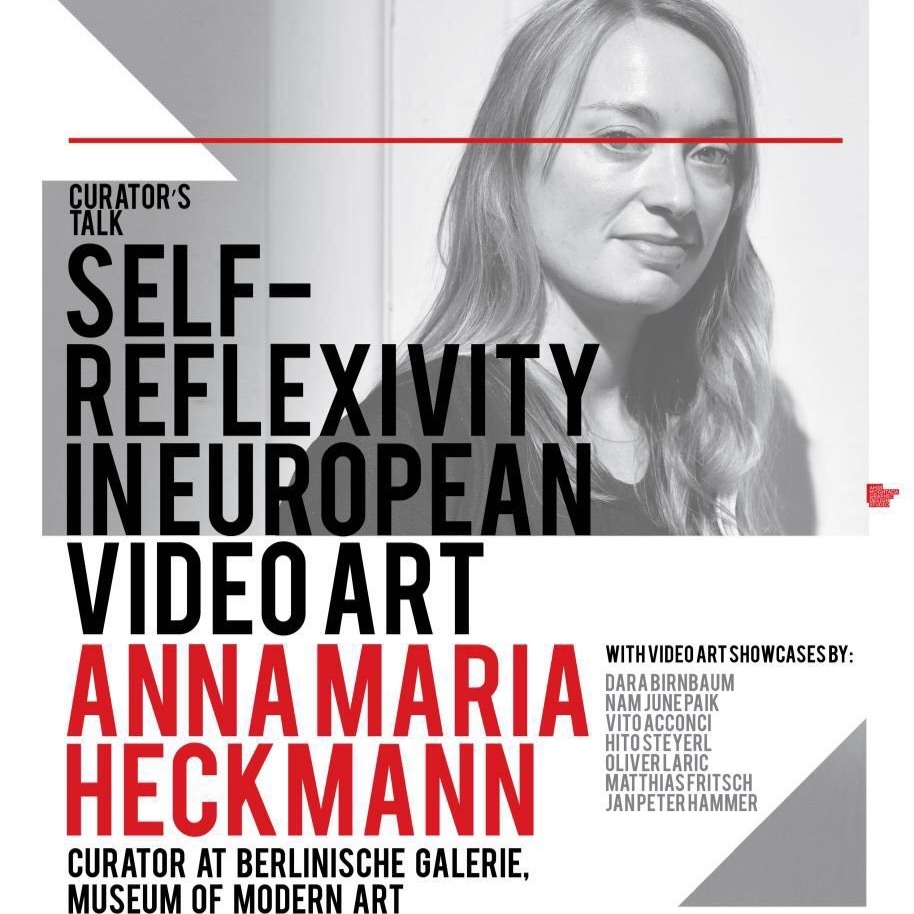
Anna Heckmann
The history of German and international video art can be described as the confluence of several other (cultural) histories of technology, philosophy, art and film. In the year 1965, when the first portable video camera of Sony Portapak became available to everyone on the American market, a new artistic genre was born – a genre which is still not completely established in the art scene. The availability of a new technology for private use inspired the first video experiments by artists such as Nam June Paik and Wolf Vostell. In the late 1960s, the main focus of video art was a critical examination of the socially dominant medium of television and a questioning of the video image itself. Later, in the early 1970s, the technology was commonly used by artists to record and document artistic performances. In the following decades, the artistic genre evolved parallel to technological developments.
Artists experimented with closed-circuit-installations and other feedback systems and gradually shifted the focus from the video image to the spectator itself. At the same time, the displays of video art expanded from the (television) monitor to the “black cube” or the exhibition space in general and were more and more considered to be part of larger installative art works. Beginning in the mid-90s, the critical examination of the medium itself was less important to the artists. They rather extended the function of the video camera as a narrative “technical eye”: a new generation of artists began to refer to “mainstream illusions” of Hollywood or the aesthetics of music videos in order to deconstruct or question them. Also, the possibilities to produce or manipulate digital images and the increasing importance of the internet became important and commonly treated topics. In some way or the other, most of them still dominate the scientific and artistic discourses today. Focussing on several artistic milestones, the talk will give an introduction to 60 years of German video art. Several video excerpts by artists such as Wolf Vostell, Katharina Sieverding, Joseph Beuys, Ulrike Rosenbach, Klaus vom Bruch, Die tödliche Doris, Marcel Odenbach, Volker Schreiner, Björn Melhus, Hito Steyerl, Christian Jankowski, Judith Hopf, Niklas Goldbach and Oliver Laric will provide an overview over the general technical, artistic and thematical developments.
In cooperation with KAAF Institute, Tehran. For further info visit: www.ka-af.com 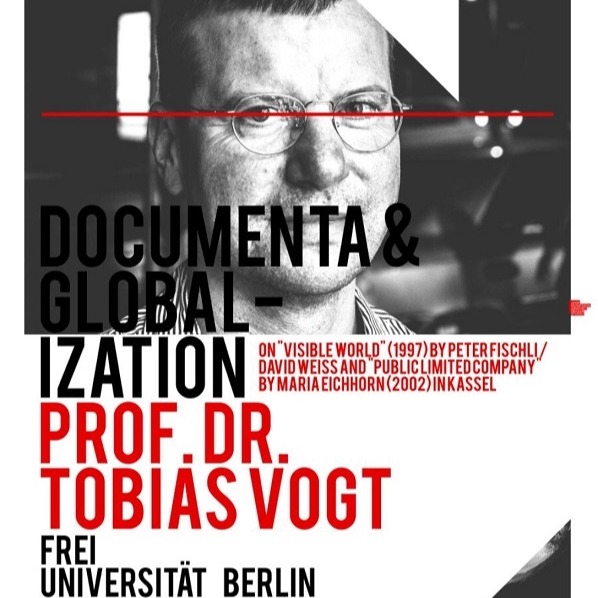
Tobias Vogt
Visible World by Peter Fischli and David Weiss embeds the impossibility of seeing Visible World at all. Hardly any viewer would want to keep track of the silent eight-hour video that was broadcast at night by the TV station arte during documenta X in the summer of 1997. It showed 2,400 photographs being cross-faded into each other in a smooth flow. Each image was visible by itself for one second only, then it would disappear just as slowly as it had gradually appeared. At the same time the following image would emerge, visible in turn by itself for just one second, only to decompose into the next image. On the one hand, the majority of documenta visitors were asleep between midnight and eight o’clock in the morning. On the other hand, the TV-viewing insomniacs who were kept company by this stream of photographs, appearing like images of a dream, neither needed to be in Kassel nor have a particular interest in art.
As a consequence of this invisibility, there is little visual and textual documentation of this video. (Fig.) The few authors who did make an effort to describe the work recall things like “images of yearnings for clichéd idylls” images showing “Scottish marshlands, Asian megacities, sunsets at a South Pacific beach.”3 But these recollections are only partially right, as is revealed by a closer inspection of the individual images. All of them originate from the artists’ archive of travel photographs that has been growing since 1987.
Between 1997 and 2001, Fischli/Weiss produced four different versions of Visible World in varying techniques and different media. After documenta X, they produced a second video version for three monitors (Fig.), each of which showed the video in a different moment of its timeline.4 In the year 2000 they published the text-less exhibition catalogue Visible World as an artists’ book (Fig.) containing 2,800 travel photos.5 And in 2001 they created the fourth version, (FIG) a slide-sorting light table as a work in progress, by then having grown to the length of 30 meters with precisely ordered transparencies of the images on it.
The voyage presented in the book, however, starts with the view of a single moving car on a country road in a green und flat landscape (fig.).6 On a closer look, the sky in the seemingly banal first photograph shows a peculiar phenomenon: (Fig) it is the reflection of the window of a second vehicle. So Fischli/Weiss apparently have been taking snapshots from a moving train or a driving bus. This small detail opens up a travelers’ tale about parallel worlds in motion and makes particular sense given the picture editing process in the video, in which two photographs set in filmic motion overlap. In the richness and the flow of this “over-informative”7 video, visitors might simply overlook this mirrored reflection. Because of this visual overload, even the photographer’s point of view reflected in this detail that the book opens with could easily disappear from the viewer’s focus.
Seemingly unspectacular images—as for instance the view from a moving vehicle onto a moving car, (FIG) a dusty street with signs in Arabic (?), (FIG) a stray dog, (FIG) a Japanese harbor set in shades of grey, (FIG) Swiss suburban housing estates with little snow, (FIG) or Parisian underpasses on a rainy day—are sprinkled between the “images of yearnings for clichéd idylls” Furthermore, these idyllic scenes rarely attain a postcard-like quality: (FIG) bad weather in Rome and Sydney hardly renders the Colosseum and the Opera House (FIG) photogenic, (FIG) and a Jeep interferes with the view of the jungle. The linking of touristic scenery and its side roads is a significant feature of the individual images in the video. Here attraction and banality, trivialities and essentials, visibility and invisibility are playfully blended into each other. Thus, in a mixture of physical superimpositions, images of banal attraction and attractive banality appear, images of important side issues and of superfluous hot spots.
The effect of these immanently generated ambivalences manifests itself especially strongly when the presentation of the video is spatially divided into two independent locations, namely, the public art exhibition and the private homes. The ambivalences within Visible World have influenced the perception of both documenta X and nighttime television. Because of its contradictory structure, and by being “over-informative,” the video managed to play the information of each type of mass media off against the other.
In the following I would like to explain to what extent the work of Fischli/Weiss has used the public means of mediated communication—in the context of an art exhibition or in the context of a TV program—to contrast with the unmediated, private communication based on a dialogue between two people as an alternative medium for cognitive interaction. Fischli/Weiss’s model of collaboration seems merely friendly and harmless, but it reveals itself as a subversive practice, occupying the intermediate space between two events in order to inform us about the apparent essential within the trivial and vice versa.
In cooperation with KAAF Institute, Tehran. For further info visit: www.ka-af.com 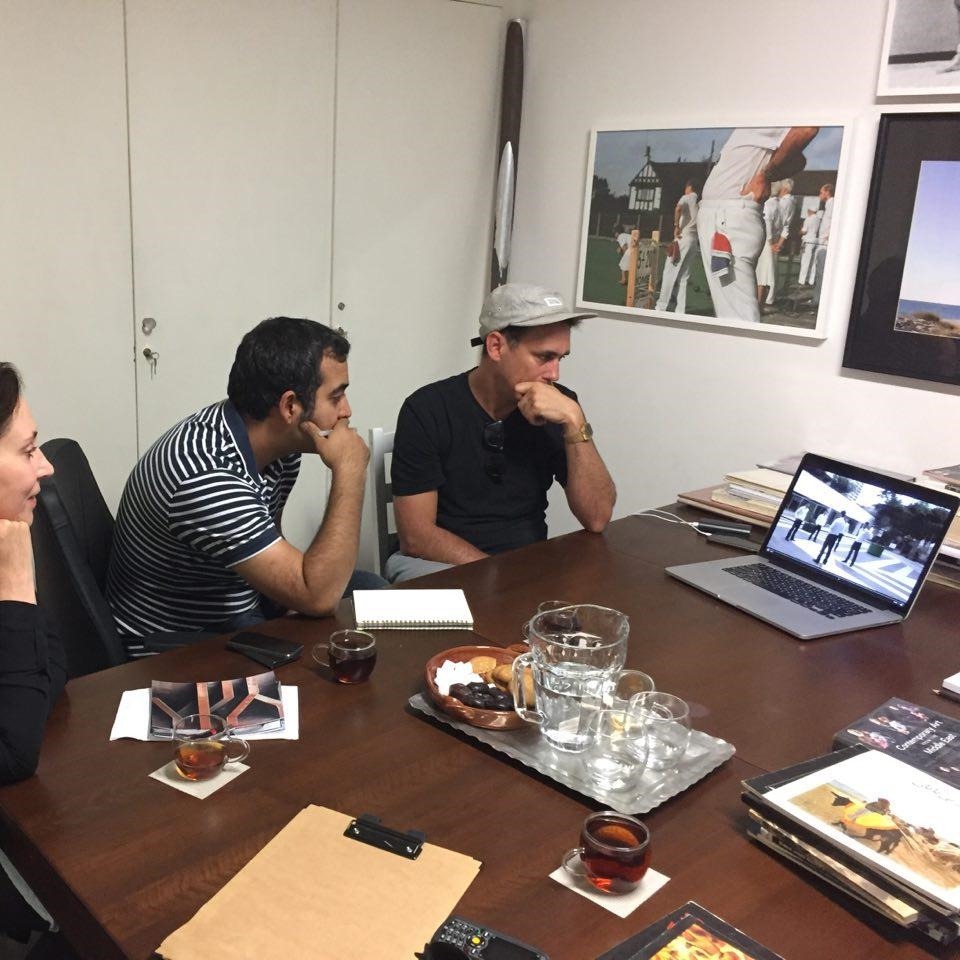
Stephanie Kloss
Stephanie Kloss is a German visual artist who's photographic work focuses on historic, social and architectural utopias. After her architectural studies at the Technische Universität Berlin she studied photography and media art with Thomas Struth and Candida Höfer at the HfG Karlsruhe.
Her work deals on the image behind the visible, the invisible, on the story transported by the depiction. It s a search for the fragmentary image of a forgone present, a utopian past. Metaphorical and physical boundaries between spaces, but also between utopia and reality, history and the present, individual and collective, scale and model are negotiated in her images.
Among her exhibitions are „Sodom Series“, Salon Muschter, Berlin 2017, „Triangle/ Road to Giza“, Galerie Laura Mars Grp., Berlin 2016, „Transit“, Acud Project Space, Berlin, „Memory Lab“, Martin Gropius Bau, Berlin 2014, „Hausbesetzung“, Kunstverein Wiesbaden, „Weltausstellung“ mit Heidi Specker, Galerie September, Berlin 2013, „Beyond Eden“ in „Bauhaus und Kibbuz - Pioniere des Kollektivs“, Stiftung Bauhaus Dessau, 2012, „Gehen Blühen Fließen“, Stadtgalerie Kiel, 2011, „Selected Artists“, Senatsstipendiaten 2010, NGBK, Berlin, Galleria Arte National, Caracas 2009.
Stephanie Kloss has been represented for 10 years by the Galerie Laura Mars Grp. Berlin.
Biography:
1988-1994
Architectural studies, Technische Universität Berlin
1994
Graduation Dipl-Ing (architect)
1995-1998
Post graduate studies of media art, Hochschule für Gestaltung Karlsruhe with Thomas Struth, Candida Höfer (photography) and Marie-Jo Lafontaine (Sculpture/Multimedia)
2004
Teaching assignment, Universität Greifswald, Caspar-David-Friedrich-Institut, department: art and audio visual media
2007
Travel grant, Goethe Institut, Caracas, Venezuela
2008
Teaching assignment for photography, Schwäbischer Kunstsommer
2010
Fellowship Escape to Create, The Seaside Institut, Seaside, Florida
2010
Working grant Visual Arts, Senatskanzlei für Kulturelle Angelegenheiten, Berlin
Kasper König collection
---------------------------------
CV
Von Hundert, Touch and Run (I FOR ONE (2015)) von Stephanie Kloss, 09. 2016
Camera Austria International 127 I 2014 Forum
Frankfurter Allgemeine Zeitung, Lichtpfeile am Nachthimmel
Die Fotografieausstellung "Memory Lab" im Berliner Gropiusbau, 28.10.2014
Der Tagesspiegel, MdF - Bilder gegen das Vergessen, 16.10.2014
Von Hundert, Ich mach’ mir die Welt – widdewidde wie sie mir gefällt
/ Venedig-Biennale 2013 von Stephanie Kloss, 12. 2013
BerlinArtLink, Body Building at Neumeister Bar-Am, 26.10.2013
Von Hundert, Gebaute Gedanken/ Ungersabriss von Stephanie Kloss, 05. 2013
TAZ, Die Welt im Detail von Brigitte Werneburg, 4.04.2013
Freitag, Nr. 50, Heilige Landschaft. Mount Sodom.
Text und Fotografie: Stephanie Kloss, 13.12.2012
Leipziger Volkszeitung, Gebrochenes Eis von Jens Kassner, 10.10.2012
Von Hundert, Brutalismus-Symposium in der Akademie der Künste, Berlin von Stephanie Kloss, 06. 2012
Von Hundert, BB7… Du Opfer! Ein Rundgang durch die kw mit Joachim Blank und Stephanie Kloss, 06. 2012
Von Hundert, Ich-Maschine, der Star und sein System von Stephanie Kloss, 12. 2011
Magazin der Stiftung Preußische Schlösser und Gärten
Berlin-Brandenburg, Januar 2012
Monopol, Magazin f. Kunst u. Leben, Kibbuz und Bauhaus in Dessau - Die verlassene Utopie von Anna-Lena Werner, 04.12.2011
Jüdische Allgemeine, Aufbau Nahost von Fabian Wolff, 01.12.2011
Berliner Zeitung, Im Kinderhaus schlafen und Mozart hören von Ingeborg Ruthe, 02.12.2011
Tagesspiegel, Stein auf Stein von Nicola Kuhn, 02.12.2011
ART - Das Kunstmagazin. Gib mir fünf! Ausstellungstipp von Mirja Rosenau, 01.12.2011
Kibbuz und Bauhaus haGalil.com, 29.11.2011
Architecture and "Political Space" in Kibbutzim, research of Berliners by Lydia Aisenberg
Kieler Nachrichten, Blumen und wovon sie erzählen „gehen, blühen, fließen“:
Stadtgalerie und Muthesius Kunsthochschule kooperieren mit einer Ausstellung
von Maren Kruse, 28.01.2011
TAZ, Einblick (371) Stephanie Kloss (Künstlerin), 26.01.2011
TAZ, Kontemplatives Nichtstun von Tim Ackermann, 01.02.2011
Von Hundert , Wolfgang Tillmans / Daniel Buchholz „Lass mal die Frau durch, die kennt den Wolfgang…“ von Stephanie Kloss, 11.2010
Open Landscapes ------- Closed Rooms, L I V R A I S O N N ° 4. 2010
Berliner Zeitung, Malen mit der Kamera, von Sebastian Preuss, 13.03.2008
Die Welt, Manipulierte Wirklichkeit von Andrea Hilgenstock,
Fotografie von Stephanie Kloss im KioskShop Berlin, 14.03.08
Mach kaputt, was dich kaputt macht von Stephanie Kloss
in Katalog Peter K. Koch, Frozen Punk, 2007
Sleek Magazin HIDE/SEEK, Hell Dorado, Annika von Taube, 01.2007
Berliner Morgenpost, Fotografisches Spiel mit Wahrheit und Mythen
von Gunnar Luetzow über Brasilia Bangkok Berlin, 10.02.06
Welt am Sonntag, Brasilia, von Christian Nink, 03.04.2005
Welt am Sonntag, Er duftete nach Jasmin, von Christian Nink, 28.04.2004
In cooperation with KAAF Institute, Tehran. For further info visit: www.ka-af.com 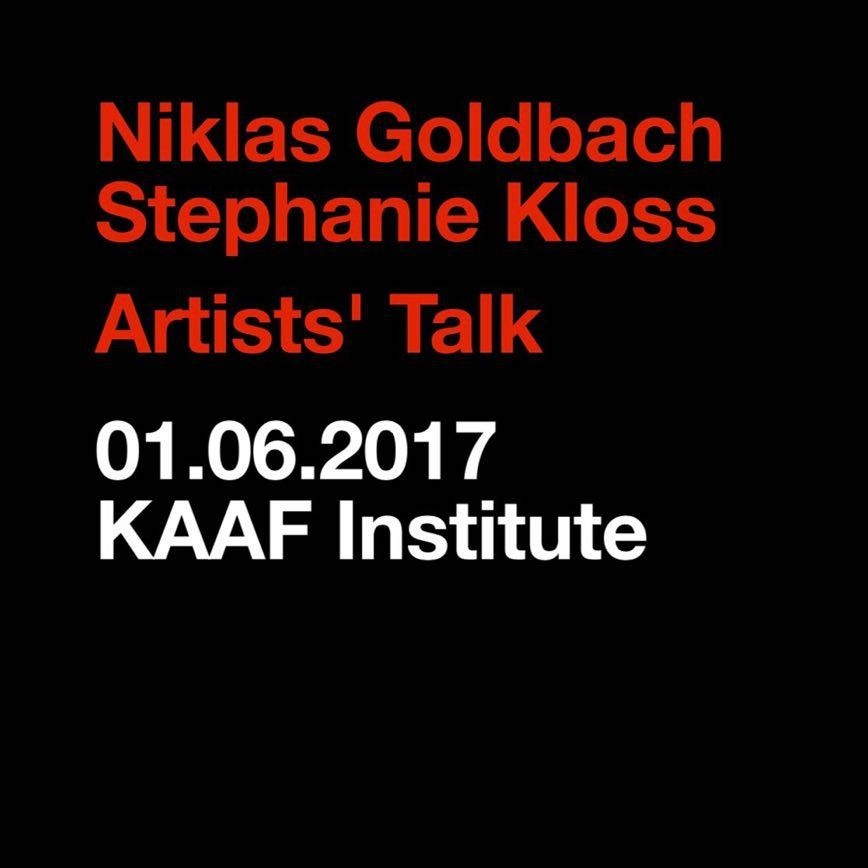
Niklas Goldbach
Niklas Goldbach, born in Witten, Germany, lives and works in Berlin. After studying Sociology at Bielefeld University and “Photography and Video” at the Unversity of Applied Sciences Bielefeld, he was awarded with a “Meisterschüler” degree at the University of the Arts Berlin in 2006. In 2005 he received the Fulbright Grant New York and majored in the MFA program of Hunter College, New York City.
Niklas Goldbach received several sholarships (i.e. Stiftung Kunstfonds Bonn 2010, Arbeitsstipendium Bildende Kunst des Berliner Senats 2013, Globalstipendium des Berliner Senats 2014, Dredsdner Stipendium für Fotografie 2016, Villa Aurora Los Angeles 2017) and presented his works in numerous solo shows, group exhibitions, and festivals such as at Museum der Moderne, Salzburg, Museo Reina Sofia, Madrid, Mori-Art Museum, Tokyo, Neuer Berliner Kunstverein n.b.k., Cornerhouse, Manchester, documenta 14 public programs, National Taiwan Museum of Fine Arts, Taichung, Centre Pompidou, Berlinische Galerie Museum for Contemporary Art, Museum Ludwig, Cologne and the Short Film Festival Oberhausen. In 2014 he was awarded with the “Paula Modersohn-Becker Jubilee Award”.
In cooperation with KAAF Institute, Tehran. For further info visit: www.ka-af.com 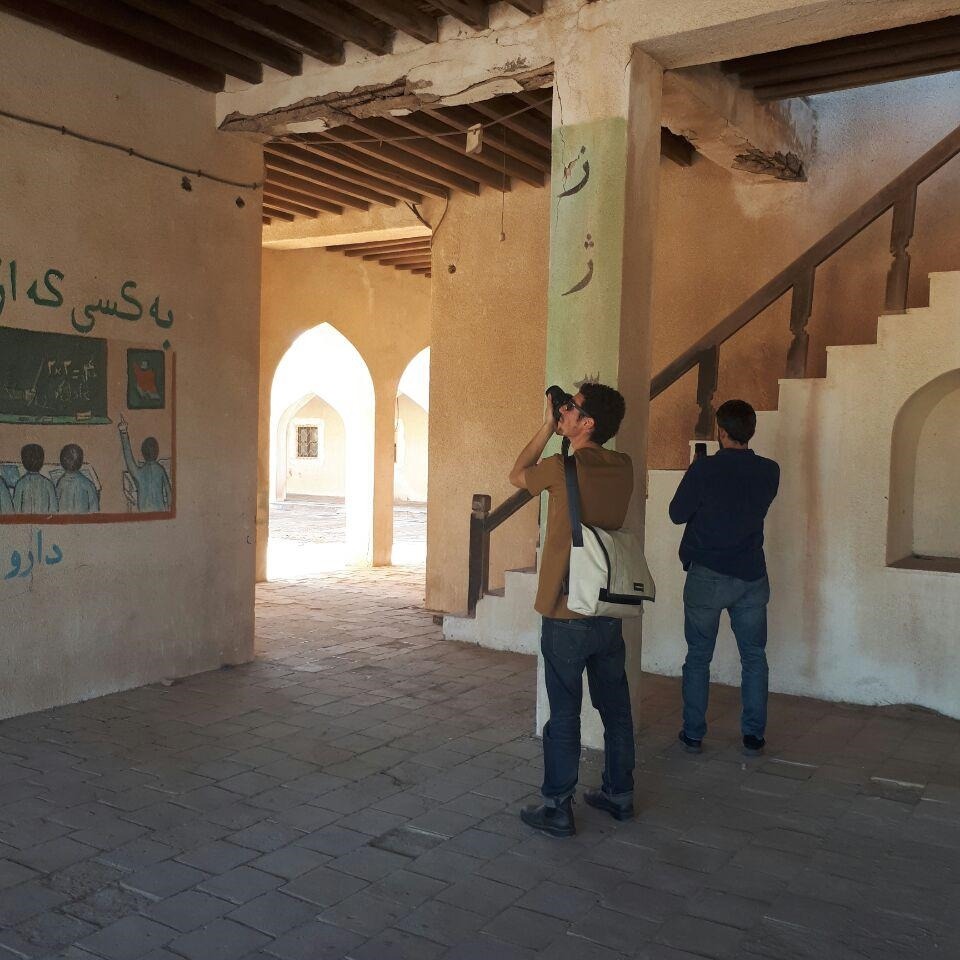
Samuel Kalika
Samuel Kalika is the director and founder of Critical Concrete, a social architecture initiative that tackles the huge issue of housing poverty through hands-on educational programmes.
Critical Concrete is an emerging educational and social initiative that stands out of the regular dynamisms of real estate development and promotes new mechanisms to rehabilitate social housing, and improve public and cultural spaces shared by low-income communities. It advocates a fundamental right to adequate housing, that is often disregarded due to lack of public resources or political regulation. It reflects on increasing popularisation and influx of global capital that causes social polarization, rising rents and cost of living in the city of Porto and beyond. Instead of building for, we build with. The most impactful format that Critical Concrete runs is the annual international practical and theoretical Summer School. Families in-need, students and interdisciplinary group of mentors, researchers and practitioners team-up to demonstrate the collective power capable of changing people’s housing habits.
www.criticalconcrete.com
In cooperation with KAAF Institute, Tehran. For further info visit: www.ka-af.com 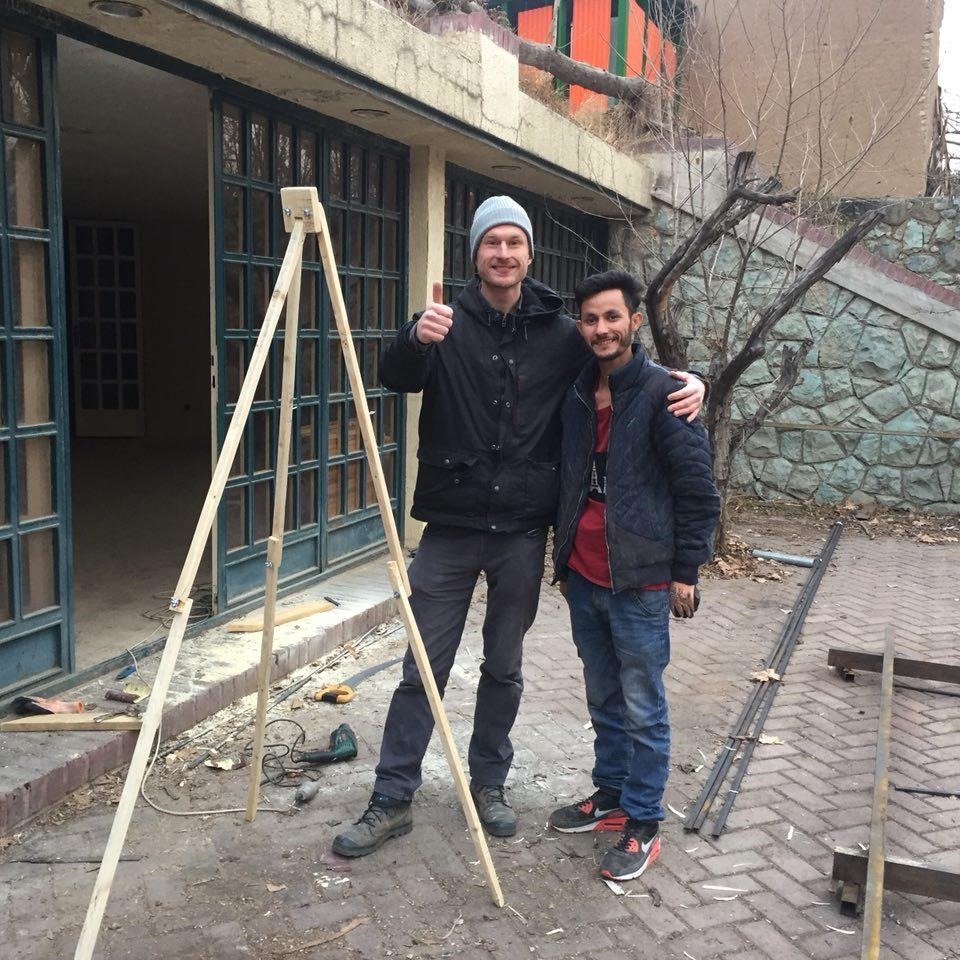
Adam Noack
Adam Noack was born in 1984 in Duisburg, as the third of eight children of the extended family Noack. After completing the Abitur, he held his civilian service in England, West Sussex. Back in Germany, he spent four semesters in Greifswald as a pharmacy student,broke off this study and devoted himself entirely to his interest and his passion for artistic exploration. After a one year internship at the State Theatre in Detmold and a private artacademy in 2007, Adam Noack began the study of fine arts at the Bauhaus-University Weimar. As Cusanuswerk scholarship in 2010, he studied for a semester at Pratt Institutein Brooklyn, New York. In 2013 he completed his studies at the Bauhaus-University as a graduate artists. He lives and works in Weimar as a freelance artist.
www.adamnoack.de
In cooperation with KAAF Institute, Tehran. For further info visit: www.ka-af.com 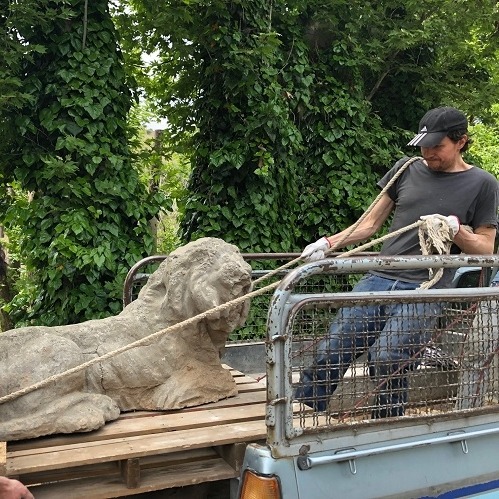
Olaf Brzeski
KAAF Institute will host distinguished Polish artist, Olaf Brzeski, with a series titled: “Once Upon a Time in Iran”. Created with ceramic artists from Tabriz during a three-month artist residency program (spent in three trips over a year), “Once Upon a Time in Iran” is Brzeski’s second collaboration with KAAF Foundation; the former being his sculpture installation in Tehran Museum of Contemporary Art in 2014. Olaf Brezski works in mediums of installation, illustration, sculpture & film. This time, he’s chosen ceramics as his language, and a field of recycled and redesigned material as his exhibition space.
Production Manager: Atefeh Fazel
Curator: Alireza Labeshka
Assistants: Batool Ahmadpour, Elham Hosseini from Qobar Group
Exhibition Design and Build: Hossain Zanganeh, Sadra Keyhani, Hamed
It is with a remarkable sense of imagination that Olaf Brzeski reinterprets the tradition and scope of sculpture. Many of the artist’s works refer directly to the human form, enacting not so much the physical as the emotional depths of the subject. Brzeski’s sculptural bodies are replete with the unexpected, the uncanny, the unnatural and the oversized. The source of these fantastic, astonishing forms is always the idea, then the sketch – as the simplest metaphor for the act of creation
Olaf Brzeski (born 1975 in Wrocław) is a sculptor and author of installations and films. He is one of the most original sculptors of the young generation – he experiments with various materials, creates optical illusions, builds untypical relationships between a tangible object, a moment of creation, durability and experience resulting from the exposure of a work of art in the museum space. Brzeski studied at the Faculty of Architecture of the Wrocław University of Technology and the Faculty of Sculpture of the Academy of Art and Design in Wrocław. A large-format sculpture “For the Love og a Woman” was created in 2012 and was presented on the artist’s retrospective exhibition at the Centre for Contemporary Art Ujazdowski Castle in Warsaw. The sculpture is made of painted steel and aluminium, although it looks as if it were assembled from delicate and flexible cereal ears. It depicts two silhouettes interlocked in a fight: three metres tall “straw” giants, seemingly on the verge of disintegration, wrestle with each other defying laws of physics with their size and fragility. Brzeski produces a perfect illusion and at the same time, with unique precision – it took several months of work – sketches a three-dimensional picture that refers to the ancient art. Similarly as in other sculptures of recent years, the artist addresses the construct of masculinity; it is a story about aggression, desire, violence, shame, power and fear of vulnerability.
1994-1995 - studied at the Faculty of Architecture of Technical University in Wroclaw
1995-2000 - studied at the Faculty of Sculpture at the Wroclaw Academy of Art and Design
Lives and works in Wroclaw
In cooperation with KAAF Institute, Tehran. For further info visit: www.ka-af.com 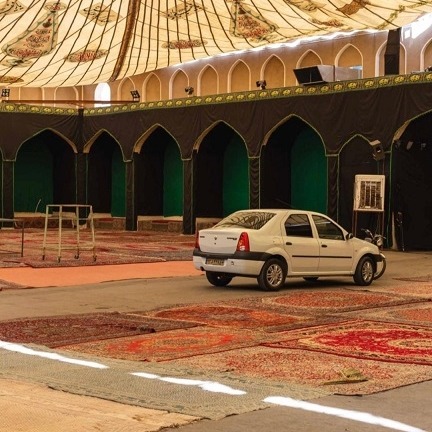
Jenny Hasselbach
Acceleration. Standstill. Stopping. Day in, day out, Prides, Paykans and other Iranian-made cars crawl along Tehran’s roughly 500 kilometres of highway. Cars represent the centrepiece of town-planning as a result the Iranian people value them very highly.
Unsurprisingly, then, the car is omnipresent throughout Iran. It oscillates between public and private space, is an unavoidable pacemaker and a private retreat, dating platform and centre of conflict, movement and standstill.
In the flow of engines, we pause together for a moment.
The vehicles, the people, and my eye.
My stay as artist-in-residence at the Kaaf Institute in Tehran has taught me an entirely new sense of time: on the one hand, there is the Iranians’ accelerated lifestyle; on the other, there is the involuntary deceleration caused by congested roads and highways. I set aside four weeks for Tehran and explored the city’s core as well as its periphery. First, I needed to get a sense of the place, to understand the city in order to finally become one with it. As a result, not a day went by when I wasn’t surprised by local conditions. I let myself be carried along by people who taught be about their country and culture, adapted their habits and moved confidently, including in remote areas, and I was always part of the energy-sapping traffic infrastructure, which ended up being the theme of my work “Ortsmarken Zeitkurven” (“Landmarks Time Curves”).
I was given the unique opportunity to base myself at the Kaaf Institute in the North of the city – a wonderful place to rest after my exciting expeditions of the city.
In conversations with the collective which makes up the Kaaf Institute, I was able to build a foundation for my discoveries and experiences. This in turn helped me gain a reflected understanding of the city and of Iranian culture. Many aspects would otherwise have remained hidden from me. “Why are there concrete blocks in front of shops? What function does this building serve? Where can I find more public places? Which festivity is taking place here?” I am very grateful for this knowledge, which was indispensable for my work.
With the friendly support of ifa Institut für Auslandsbeziehungen.
In cooperation with KAAF Institute, Tehran. For further info visit: www.ka-af.com 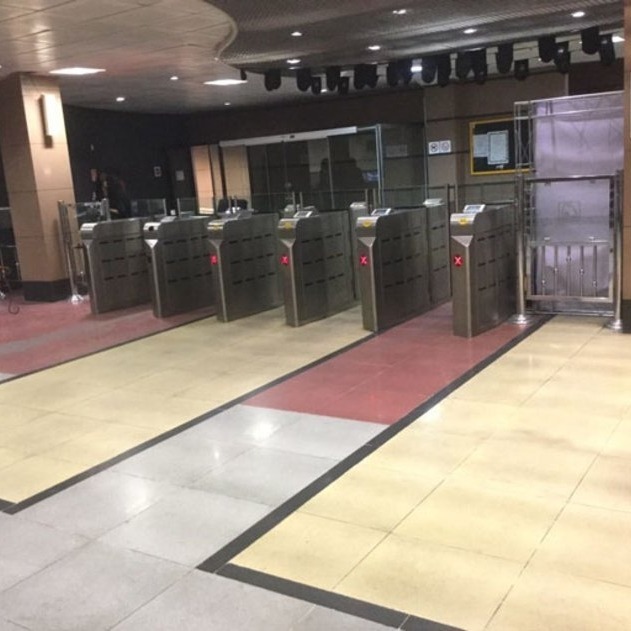
Seyed Ali Sharifi
SEYED ALI SHARIFI ( IRAN )
My project is a comparative study of space separators like Berlin wall in the case of the city of Berlin and the iron bars recently installed in downtown of Tehran city. As a flaneur I wander in the city of Berlin to trace the former resistance of citizens opposing the physical and conceptual existence of such separators and compare them to the contemporary endeavors which are being done by Tehrani citizens. I am addresing these questions: is it possible to pass the borders and walls without deconstruction? How do the walls and other separators define different urban subjects and sections?
The walls for an architect are like letters for a writer, and the built spaces are the words thus. As a writer and architect, the walls and the words are in a mutual relation for me. I am taking advantages of these two elements. The cognitive and analytical experience of mind and the formative aspect of everyday life based on creativity. On the other hand as the words are being turned to sentences and sentences to paragraphs to form a text, the architectural spaces are being formed to make finally a city. In this regard, the experience of looking an urban domain from a sleeping room's window is the embodiment of that cognitive and analytical play of the mind.
Simultaneity of writing for magazines like Andishe, Iranshahr, Shabak, Baam and also designing for architectural residential, market, office, city services, and industrial projects are steps to make more meaningful the lives of citizens and making more realistic their process of knowing themselves. I have hold many festivals, conferences with participation of architects. urban planners and sociologists. Finally I have also done some urban photography projects.
In cooperation with Center for Art & Urbanism (ZK/U), Berlin. For further info visit: www.zku-berlin.de 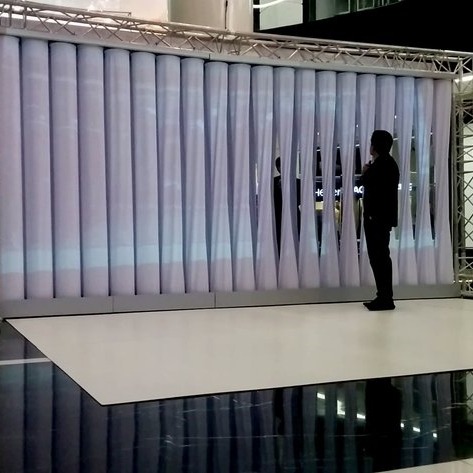
Mobasher Niqui
Mobasher is an architect and educator. Within his practice he has been questioning the sedimentation of the disciplinary rituals, in the practice of architecture. By recalling architectural production in a broader frame: a cultural production of meaning and performance delivered to its context. Since 2014 he has been looking into urban transformations through the conditions of communing. He is also interested in the new institutional models and procedures. He employs artistic research and production to fertilize the architectural design procedure.
He founded mbnqstudio upon his return to Tehran after a diploma in Architecture from EPF Lausanne on 2012. Studio serve as a project space while also an experimental practice; an observatory. The studio also delivers architectural design with curriculum in small scale designs and interventions. It is also member of the Kaaf and Raf Partnership. Along that Mobasher initiated various projects UTP; and FablabII at Univeristy of Tehran on interaction and co-initiated Mosha project (later, Framing The Common) on joint with WorkNot! Collective (Golnar and Arvand) showed in 15th Venice Biennale. Since 2013 He has been teaching architectural design studios in various universities and institutions in Tehran. His writings has appeared in San Rocco Magazine and Hacking Urban Furniture Conference at ZK/U Berlin.
In cooperation with Center for Art & Urbanism (ZK/U), Berlin. For further info visit: www.zku-berlin.de 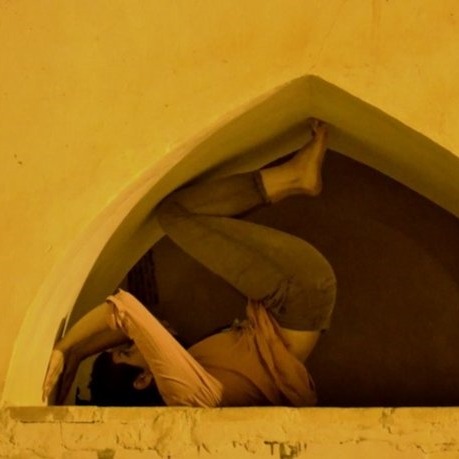
Saba Zavarei
Here I am at ZK/U, as part of collective project curated by Alireza Labeshka (Studio for Contemporary Art/Isfahan) and supported by Raf Projects. The Urban Hegemony, is a project that aims to criticise the recent wave of gentrification in big cities in Iran, arguing that the change in the urban environment by the authority, has happened in a specific way to depoliticize the cities and reduce the human interactions to lead to an apolitical space.
Stretching somewhere between London and Tehran, I eventually gave up the attempt to locate myself. Suspended in/outside of the borders, unable to perform the appropriate maps of authorities, I began to redraw other maps, to manipulate the maps of others.
Places are produced, occupied, altered and performed constantly. What motivates me to do art and also to write is to question this process: the performance of place and the production of space.
In my site-specific performances, public interventions and interactive works, I try to transgress the normative geography of a given site and open up the space for the audience/participants to re-define it by their engagements.
The past two years, I have also been working on my PhD thesis in performance studies at Goldsmiths, University of London. For my thesis I am focusing on the gender performance in relation to space and the power structure. I specifically take a close look at post-revolutionary Tehran as my case study.
In cooperation with Center for Art & Urbanism (ZK/U), Berlin. For further info visit: www.zku-berlin.de 
Shabahang Tayyari
Shabahang Tayyari's residency project was organized and Funded by Raf Projects e.V. in Berlin and Goethe Institute, Summer 2018 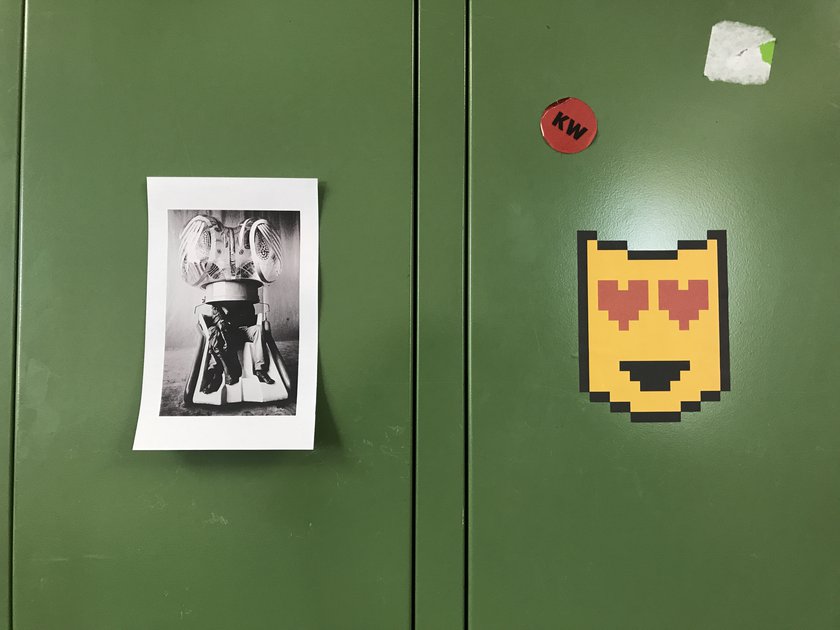
Monireh Askari
Monireh Askari's residency project was organized and Funded by Raf Projects e.V. in Berlin and Goethe Institute, Summer 2018 
Parnian Ferdossi
Parnian Ferdossi's residency project was organized and Funded by Raf Projects e.V. in Berlin and Goethe Institute, Summer 2018 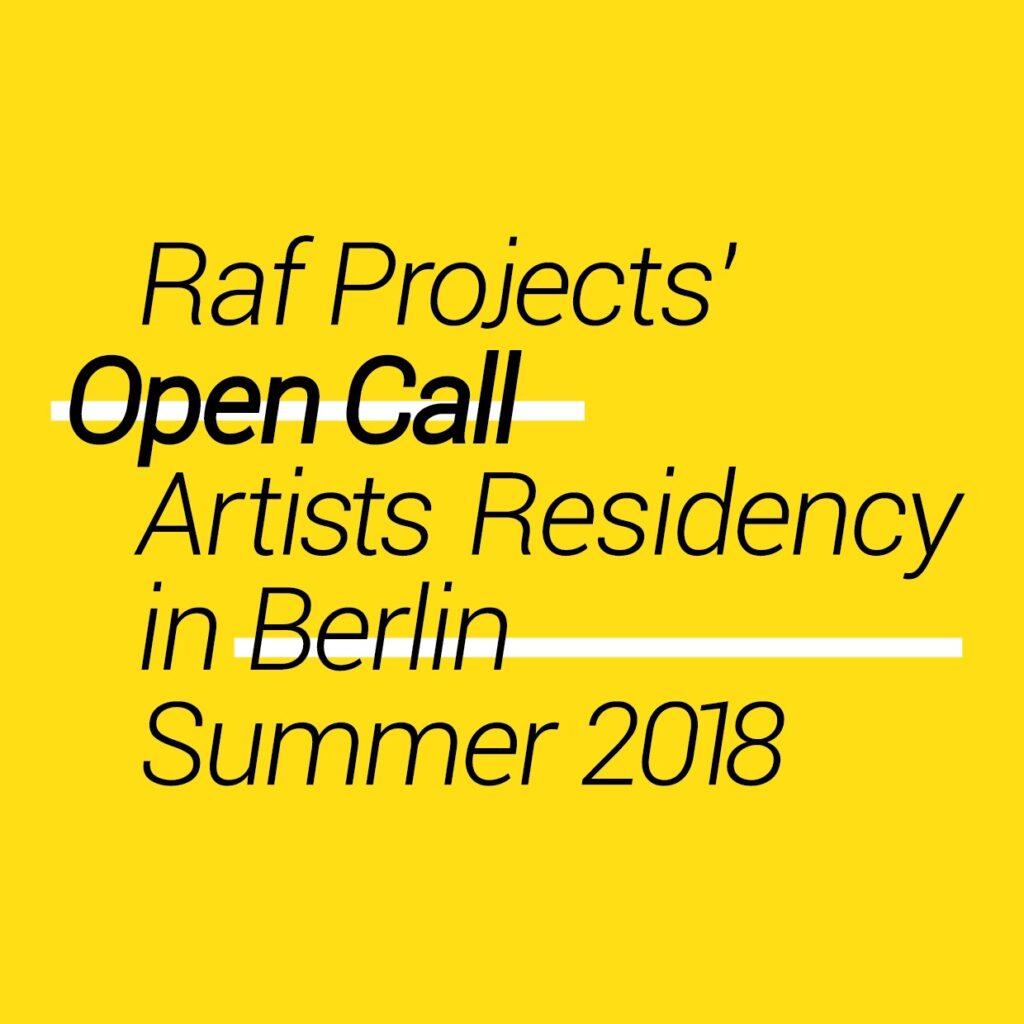
Residency for Iranian Artists in Berlin
فراخوان برای اقامت هنری در برلین - 2018 






















